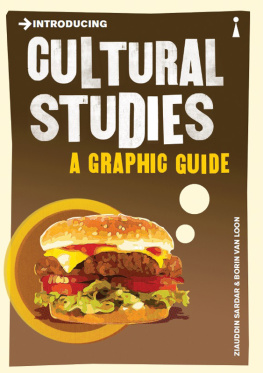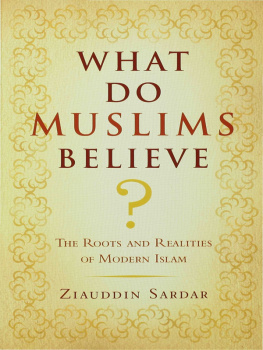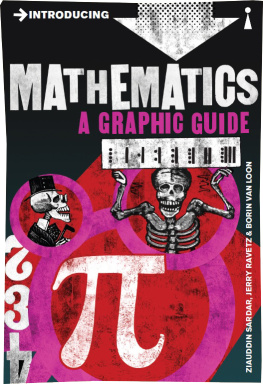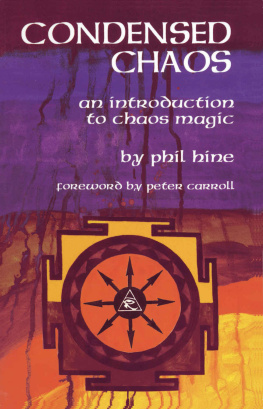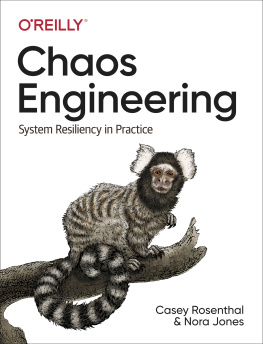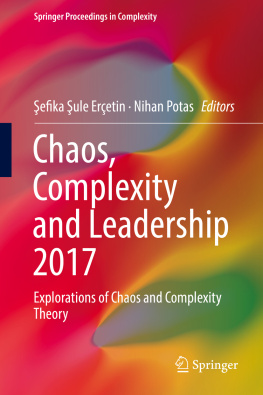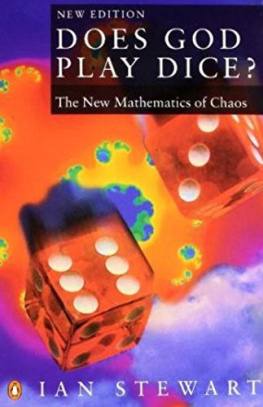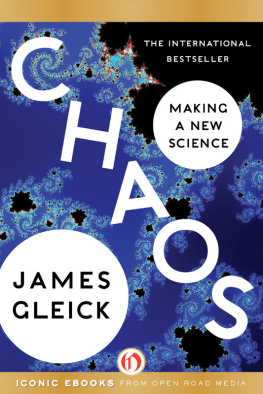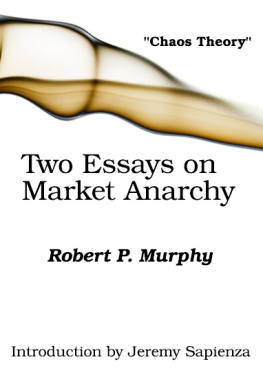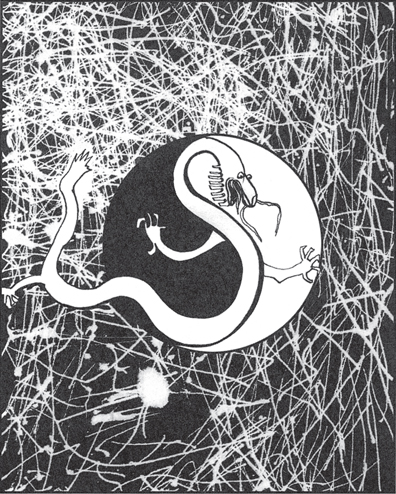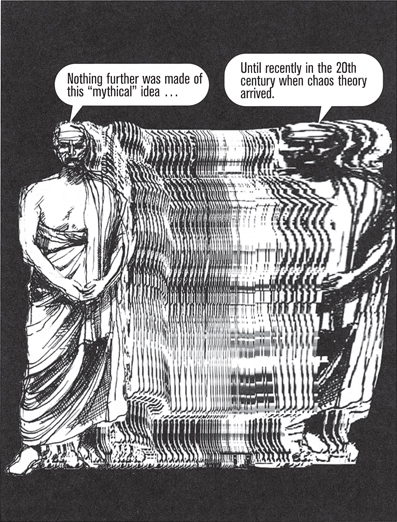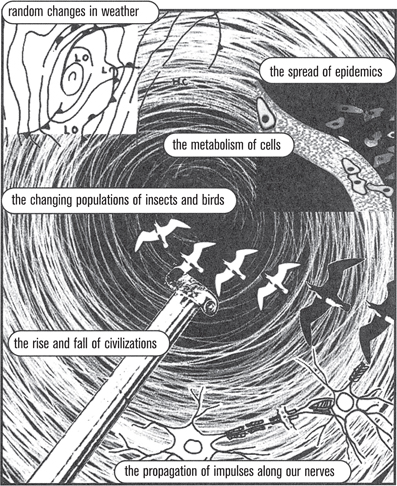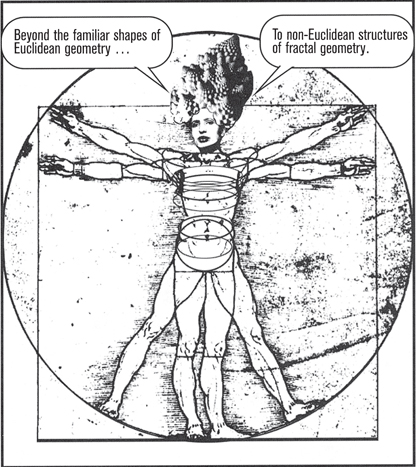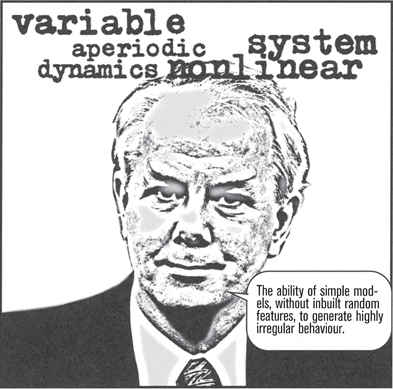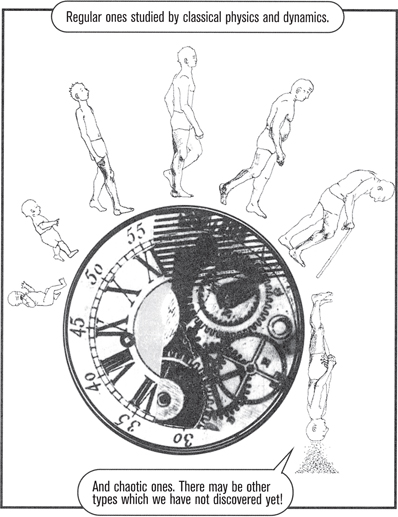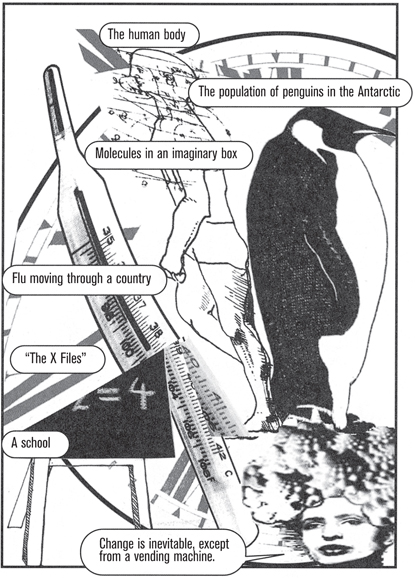Contents
Published by Icon Books Ltd, Omnibus Business Centre, 39-41 North Road, London N7 9DP
email:
www.introducingbooks.com
ISBN: 978-184831-766-6
Text and illustrations copyright 2013 Icon Books Ltd
The author and artist have asserted their moral rights.
Originating editor: Richard Appignanesi
No part of this book may be reproduced in any form, or by any means, without prior permission in writing from the publisher.
Yin, Yang and Chaos
Ancient Chinese thought recognized that chaos and order are related. In Chinese myth, the dragon represents the principle of order, yang, which emerges from chaos. In some Chinese creation stories, a ray of pure light, yin, emerges out of chaos and builds the sky. Yin and yang, the female and male principles, act to create the universe. But even after they have emerged from chaos, yin and yang still retain the qualities of chaos. Too much of either brings back chaos.
Ancient Chaos
Hesiod, a Greek of the 8th century B.C., wrote the Theogony, a cosmological poem which states that first of all Chaos came to be, and then the Earth and everything stable. The ancient Greeks seem to have accepted that chaos precedes order, in other words, that order comes from disorder.
Nothing further was made of this mythical idea ...
Until recently in the 20th century when chaos theory arrived.
Chaos Theory
Chaos theory is a new and exciting field of scientific inquiry.
The phenomenon of chaos is an astounding and controversial discovery that most respectable scientists would have dismissed as fantasy just a decade or so ago.
But today it is seen as one of the most notable since the advent of quantum theory in the early 1900s.
If chaos theory fulfils its potential, it will dramatically change the way we view the natural world and ourselves.
Why is Chaos Exciting?
Chaos is exciting for all these reasons ...
It connects our everyday experiences to the laws of nature by revealing the subtle relationships between simplicity and complexity and between orderliness and randomness.
It presents a universe that is at once deterministic and obeys the fundamental physical laws, but is capable of disorder, complexity and unpredictability.
It shows that predictability is a rare phenomenon operating only within the constraints that science has filtered out from the rich diversity of our complex world.
It opens up the possibility of simplifying complicated phenomena.
It combines imaginative mathematics with the awesome processing power of modern computers.
It casts doubt on the traditional model-building procedures of science.
It shows that there are inherent limits to our understanding and predicting the future at all levels of complexity.
It is strikingly beautiful! Shakespeare had it right when he had Hamlet say in Act 1, scene 5 ...
There are more things in heaven and earth Horatio, Than are dreamt of in your philosophy.
Hi! Im Cordiallia Cauliflower. Just look at what chaos has done to me!
Where Does Chaos Come From?
Three major recent developments have made chaos a household word.
Breathtaking computing power that enables researchers to perform hundreds of millions of complicated calculations in matters of seconds.
The rise in computing power has been accompanied by a growing scientific interest in irregular phenomena such as ...
random changes in weather
the spread of epidemics
the metabolism of cells
the changing populations if insects and birds
the rise and fall of civilizations
the propagation of impulses along our nerves
Chaos theory was born when these developments were combined with the emergence of a new style of geometrical mathematics ...
Beyond the familiar shapes of Euclidean geometry ...
To non-Euclidean structures of fractal geometry.
These developments have made an impact in almost every field of human endeavour. Chaos theory has been like a sea into which flow the rivers and tributaries of almost every discipline and subject from mathematics, physics, astronomy, meteorology, biology, chemistry, medicine to economics and engineering, from the study of fluids and electrical circuits to the study of stock markets and civilizations.
Defining Chaos
Chaos has been variously defined. Here are just a few examples ...
A kind of order without periodicity.
Apparently random recurrent behaviour in a simple deterministic (clock-work-like) system.
The qualitative study of unstable aperiodic behaviour in deterministic nonlinear dynamical systems.
And heres another by a mathematician in the field, Ian Stewart.
The ability of simple models without inbuilt random features, to generate highly irregular behaviour.
Technical definitions of chaos are not easy to understand. So lets begin to familiarize ourselves with its terminology.
The Language of Chaos
Dynamic, Change and Variable
Chaos is a dynamic phenomenon. It occurs when something changes. Basically, there are two types of changes.
Regular ones studied by classical physics and dynamics.
And chaotic ones. There may be other types which we have not discovered yet!
What is changeable in a given situation is referred to as a variable.
Systems
Any entity that changes with time is called a system. Systems thus have variables. Here are some examples of systems.
The human body
The population of penguins in the Antarctic
Molecules in an imaginary box
Flu moving through a country
The X Flies
A school
Change is inevitable, except from a vending machine.
Defining Systems


